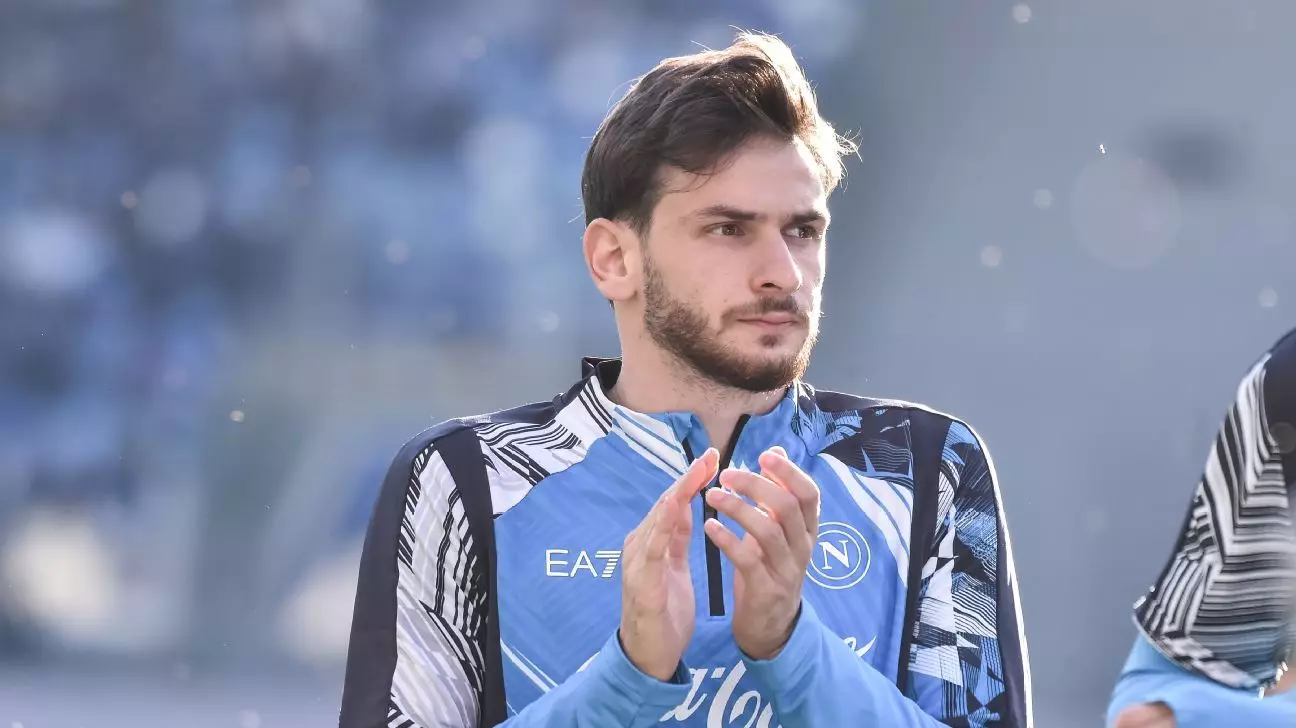The world of football is perpetually rife with speculation, particularly concerning player transfers, and often involves a complex interplay of rumors, contract negotiations, and managerial responses. Liverpool’s head coach Arne Slot recently found himself at the epicenter of this phenomenon, as whispers about Napoli winger Khvicha Kvaratskhelia potentially making a January move to Anfield began circulating. The nature of these discussions sheds light on both the critical aspects of transfer negotiations and the fragile psychology surrounding public perception of players.
Khvicha Kvaratskhelia’s situation is illustrative of the challenges players encounter in securing their future amidst incessant speculation. Despite his contract running until 2027, rumors have intensified due to stalled discussions regarding an extension with Napoli. This highlights a crucial factor in modern football: a player’s value can fluctuate significantly based on the vagaries of public speculation. Napoli reportedly values Kvaratskhelia at around €80 million ($82 million)—an amount that reflects his potential but also signifies how high-stakes negotiations can pivot on club strategy and market dynamics.
As discussions intensify, attention shifts not only to the potential destination of the player but to the implications such movements could have. Paris Saint-Germain is seen as a frontrunner, yet the sudden emergence of Liverpool’s interest complicates the scenario. Slot’s refusal to engage with the media on this topic suggests a deliberate strategy to maintain focus on the present rather than become embroiled in transfer rumors that may detract from the team’s performance.
Media narratives play an essential role in shaping public perception regarding potential signings. Slot’s comments emphasize the cyclical nature of transfer rumors, where speculation often builds to a crescendo before dissipating. His observation that “nine out of ten times” these stories are unfounded points to the fact that many reported deals are merely illusions created by media outlets seeking engagement rather than solid intelligence.
Slot’s cautious approach can also serve as ammunition for critics who argue that a lack of communication may frustrate fans eager for tangible news. However, it can equally be seen as a protective measure—shielding both the team and the player from the pressures created by external expectations. Managers wield considerable influence, and their ability to manage narratives can significantly impact a team’s morale.
The internal dynamics of the team also come under scrutiny, particularly when criticism targets individual players. Trent Alexander-Arnold, a talented right-back for Liverpool, recently faced backlash following a subpar performance against Manchester United. Slot’s defense of Alexander-Arnold highlights another critical aspect of modern football: the mental health and morale of players subject to public criticism.
In defending Alexander-Arnold, Slot suggests that the scrutiny isn’t wholly deserved, noting, “I do see patterns in the goals we concede but it is not about Trent…he mainly had great games this season.” By emphasizing the collective nature of defense, Slot redirects attention from individual failures to team dynamics, effectively sharing responsibility.
This stance is not merely a managerial tactic; it reflects a broader understanding of how player performance should be assessed in a context that includes team strategy. Slot’s insights into defense indicate an awareness of the multifaceted nature of football, where one player’s performance is always intertwined with that of their teammates.
The dual narratives surrounding transfer speculation and player criticism elucidate the intricacies of managing a football club. Slot’s handling of the Kvaratskhelia situation alongside his support for Alexander-Arnold demonstrates a balance between engaging with the external narrative while maintaining internal focus. The world of football management requires strategic communication, both to manage player pressures and to navigate the relentless tides of media speculation, ultimately striving for a cohesive team that can weather both internal and external storms.


Napsat komentář